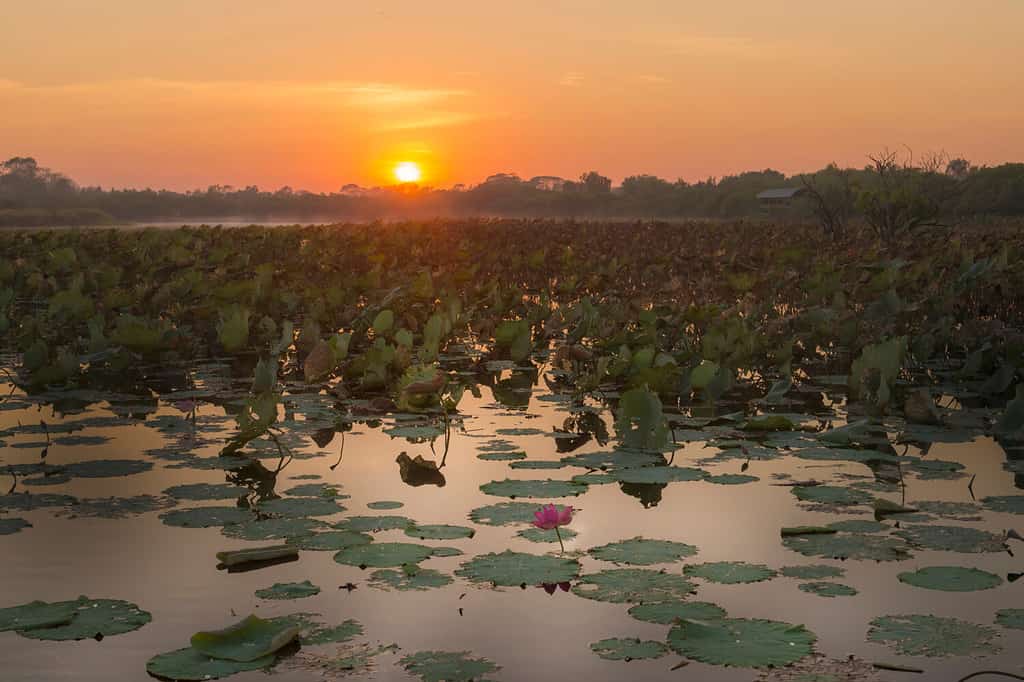Not many people realize just how beautiful birds can be. Take a look at the black-necked stork, for instance. This gorgeous creature has color-shifting plumage from the top of their head to the bottom of the neck.
Ron Magill revealed on August 4 that the last living black-necked stork at Zoo Miami, a species that is almost extinct, has passed away. He said that it was a “bittersweet loss” for the park.

Male black-necked storks have brown eyes.
©Yvan Tessier/iStock via Getty Images
The typical lifespan of the tall, long-necked wading birds is 30 years. As per Magill, Zoo Miami’s goodwill ambassador, the female zoo animal that had previously been a part of the Wings of Asia Exhibit had lived for more than 50 years.
She was the eldest black-necked stork in the care of humans on the planet when she came in 1977 as a mature wild bird. The female Crandon Park Zoo animal had an unfavorable quality of life due to a variety of geriatric conditions, including blindness and confusion.
She was put to death as a result.
Where Do Black-Necked Storks Live?
Australia only has one species of stork, the Black-necked Stork. It can be distinguished from any other Australian birds because of its enormous black bill, shiny deep violet and green neck, and black and white abdominal plumage.
Their legs are spindly and a bright coral color. The female of this species can be identified by her yellow eyes. Only coastal and near-coastal regions of northern and eastern Australia where Black-necked Stork live.

Many birds wade in the swamps of Australia.
©Shane Bartie/Shutterstock.com
This bird is also common across the monsoonal regions of northern Australia, but less of them migrate south to eastern Australia. The Black-necked Stork lives in swamps, river floodplains with sizable shallow marshes, and ponds.
Sometimes, these birds will wander off looking for food into open meadows, wooded regions, or waterlogged paddocks.
Facts About the Black-Necked Stork
The Black-necked Stork consumes amphibians, tiny crustaceans, and fish. The majority of prey is captured by the bird’s striking motion and huge bill grasp. Some food is obtained by jumping into the air or jumping forward with a long stride.
Black-necked stork couples form bonds that last for many years, if not forever. A tall tree situated in or close to water is used as the location for the nest, which is a sizable platform made of twigs and other foliage.
Birds are sly and build their nests in solitary pairs. Apart from some bill bowing and applauding, there isn’t much romance. Although these birds are not extinct, they are threatened and inch closer to extinction as each living stork dies.
The photo featured at the top of this post is © Yvan Tessier/iStock via Getty Images
Thank you for reading! Have some feedback for us? Contact the AZ Animals editorial team.







